Signs convey information to travelers not only by their messages and color, but through their shape as well.
Special shapes are specifically assigned to certain types of signs so that travelers can recognize them quickly and react appropriately.
In general, the greater number of sides on a sign, the more critical a message it conveys. This is why a circular shape was adopted for the Railroad Advance warning sign (i.e. infinite number of sides), as a collision between a train and a typical vehicle will nearly always end badly. Then next the octagon shape is used for the STOP sign, since not noticing that sign typically has unpleasant consequences, and so on down the line. There are of course exceptions to this rule - a pentagonal County Route marker isn't (typically) a greater threat than a standard square route marker, and even though they have only 3 sides, the YIELD and No Passing Zone signs are still rather important (and the pennant shape of the NPZ sign serves as a sort of "get back over on your own side of the road" arrow).
Standard sign shapes and their assigned meanings:
 Circle - Exclusively for railroad advance warning signs
Circle - Exclusively for railroad advance warning signs
 Octagon - Exclusively for STOP signs
Octagon - Exclusively for STOP signs
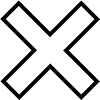 Crossbuck - Exclusively for railroad grade crossing signs
Crossbuck - Exclusively for railroad grade crossing signs
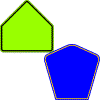 Pentagon - Used for school advance warning signs and county route marker signs
Pentagon - Used for school advance warning signs and county route marker signs
 Diamond - Used for warning signs
Diamond - Used for warning signs
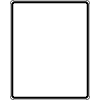 Rectangle, Longer Dimension Vertical - Used for regulatory signs
Rectangle, Longer Dimension Vertical - Used for regulatory signs
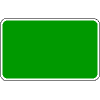 Rectangle, Longer Dimension Horizontal - Used for guide signs, some warning signs, and temporary traffic control signs
Rectangle, Longer Dimension Horizontal - Used for guide signs, some warning signs, and temporary traffic control signs
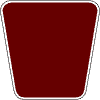 Trapezoid - Used for recreational area guide signs and National Forest route markers
Trapezoid - Used for recreational area guide signs and National Forest route markers
 Equilateral Triangle, Point Down - Exclusively for YIELD signs
Equilateral Triangle, Point Down - Exclusively for YIELD signs
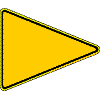 Pennant - Exclusively for No Passing Zone signs
Pennant - Exclusively for No Passing Zone signs
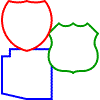 Other shapes - Typically used for route marker signs
Other shapes - Typically used for route marker signs

Tidak ada komentar:
Posting Komentar